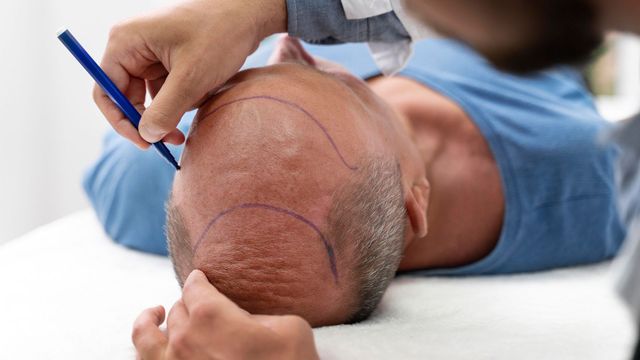
Hair loss can significantly impact an individual’s confidence, leading many to seek solutions like a Hair Transplant in Dubai. This procedure has gained immense popularity due to its effectiveness in restoring natural-looking hair. However, not everyone qualifies for a hair transplant. The success of the procedure depends on various factors, including the stage of hair loss and the availability of donor hair.
Understanding the Stages of Hair Loss
The Norwood Scale is commonly used to categorize male pattern baldness. It consists of several stages, ranging from minimal hair thinning to complete baldness. Identifying the stage of hair loss is crucial in determining whether a hair transplant is possible.
Early-Stage Hair Loss
At this stage, individuals experience slight thinning or a receding hairline. Hair transplants can be effective, but many specialists recommend alternative treatments like PRP therapy or medications to slow down hair loss before considering surgery.
Moderate-Stage Hair Loss
This stage is characterized by visible bald spots or significant hair thinning. A hair transplant may still be an option if sufficient donor hair is available. Surgeons evaluate the donor area’s density to ensure a natural-looking result.
Advanced-Stage Hair Loss
At an advanced stage, baldness becomes more pronounced, and the donor area may be insufficient to cover the bald spots. Hair transplants may not be viable due to the lack of adequate grafts. In such cases, alternative solutions like scalp micropigmentation or artificial hair implants may be considered.
Factors That Determine Hair Transplant Eligibility
Donor Hair Availability
A successful hair transplant requires a sufficient donor hair supply, typically taken from the back or sides of the scalp. If the donor area is too weak, a transplant may not yield optimal results.
Scalp Condition
Certain scalp conditions, such as severe scarring, dermatitis, or infections, may make hair transplantation difficult. A healthy scalp is essential for graft survival.
Age and Hair Loss Stability
Hair transplants work best for individuals with stable hair loss. If hair loss is ongoing, transplanting hair too early may lead to an unnatural appearance as hair continues to thin around the transplanted area.
Underlying Medical Conditions
Individuals with medical conditions such as diabetes, autoimmune diseases, or poor wound healing may not be suitable candidates for hair transplants. A thorough medical assessment is necessary before undergoing the procedure.
Hair Transplant Viability Across Different Stages
| Hair Loss Stage | Hair Transplant Possibility | Alternative Treatments |
|---|---|---|
| Early-Stage | Possible but not always recommended | Medications, PRP therapy |
| Moderate-Stage | Generally viable if donor hair is sufficient | PRP, hair fibers |
| Advanced-Stage | Often not possible due to donor area limitations | Scalp micro pigmentation, artificial implants |
Alternatives to Hair Transplants for Severe Hair Loss
Scalp Micropigmentation
This non-surgical procedure involves tattooing tiny pigments on the scalp to mimic the appearance of hair follicles. It is an excellent option for those who are not eligible for a hair transplant.
Hair Systems and Wigs
Custom hairpieces provide a natural-looking solution for individuals with extensive baldness. Modern wigs are designed to blend seamlessly with existing hair.
Regenerative Treatments
PRP therapy and stem cell treatments may help improve hair density in individuals with thinning hair, delaying the need for a transplant.
Frequently Asked Questions
Is there an age limit for a hair transplant?
There is no strict age limit, but hair transplants are more effective for individuals over 25, as hair loss patterns are more predictable.
Can a hair transplant fail?
Yes, a transplant may fail if the donor area is weak, the scalp condition is poor, or post-operative care is inadequate.
How do I know if I am a good candidate for a hair transplant?
A consultation with a hair transplant specialist will determine eligibility based on hair loss stage, donor area quality, and medical history.
Are there non-surgical ways to restore hair?
Yes, PRP therapy, medications, and scalp micro pigmentation are effective non-surgical alternatives for hair restoration.
Conclusion
A hair transplant in Dubai offers a promising solution for hair loss, but its success depends on several factors. If hair loss has progressed to an advanced stage with insufficient donor hair, a transplant may not be possible. In such cases, alternative treatments can provide satisfactory results. A professional consultation is essential to determine the best course of action for hair restoration.